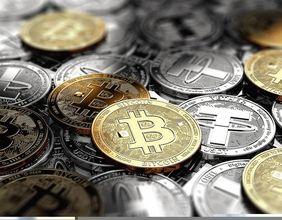Highlights
- The ECB member hinted that it intends to cap the digital euro between 1 and 1.5 trillion tokens.
- ECB executive board member Fabio Panetta highlighted that they are trying to focus on financial stability considerations in a bid to preserve a diverse and vibrant ecosystem.
- Panetta said that the digital euro would be utilised as a mode of payment in both physical and retail stores.
The concept of central bank digital currency (CBDC) has been floating around for more than a decade now, but unfortunately, no country has still come up with a concrete plan for the launch of digital currency.
Though CBDC remains a distant dream for most countries, in a first, the European Union has decided to cap the digital euro to ensure it is not misused when launched.
While addressing the Committee on Economic and Monetary Affairs of the European Parliament, ECB executive board member Fabio Panetta said that the capping of the digital euro is extremely necessary. He added the capping would offer viable solutions to ensure stability of the financial system.
Related read: Is KNC crypto’s rally here to stay?
The ECB member hinted that the body intends to cap the digital euro between 1 and 1.5 trillion tokens. When rolled out, the distribution model is going to be pretty similar to the fiat currency circulation.
Impact on financial stability
Panetta highlighted that the ECB wants to make sure that despite its digital currency plans, it is paying proper attention to the financial stability angle and preservation of a diverse and vibrant ecosystem. He had earlier indicated that the digital euro would be utilised as a mode of payment in both physical as well retail stores.
The ECB official called upon the private sectors to contribute to the spread of the digital euro and said that big tech firms would need to coordinate with public officials to roll out the digital euro effectively.
Related read: Crypto layoffs: What can follow after this?
Last year, the ECB expressed its desire to launch the digital euro by 2026. Later in April this year, a report by the Bank of International Settlement hinted that three active CBDCs were operating in testing phases in the European region. The trial has raised hopes that the digital euro may have reached the advanced stages and will be launched soon.
Conclusion
Though the potential rollout of the digital euro is still hanging by a thread, a series of discussions with the stakeholders, such as retailers and the public, is on the cards before the actual launch. Though the ECB had suggested that it is looking at a 2026 rollout, sources and reports are hinting at an early release.
Risk Disclosure: Trading in cryptocurrencies involves high risks including the risk of losing some, or all, of your investment amount, and may not be suitable for all investors. Prices of cryptocurrencies are extremely volatile and may be affected by external factors such as financial, regulatory, or political events. The laws that apply to crypto products (and how a particular crypto product is regulated) may change. Before deciding to trade in financial instruments or cryptocurrencies you should be fully informed of the risks and costs associated with trading in the financial markets, carefully consider your investment objectives, level of experience, and risk appetite, and seek professional advice where needed. Kalkine Media cannot and does not represent or guarantee that any of the information/data available here is accurate, reliable, current, complete, or appropriate for your needs. Kalkine Media will not accept liability for any loss or damage as a result of your trading or your reliance on the information shared on this website.
.png)




